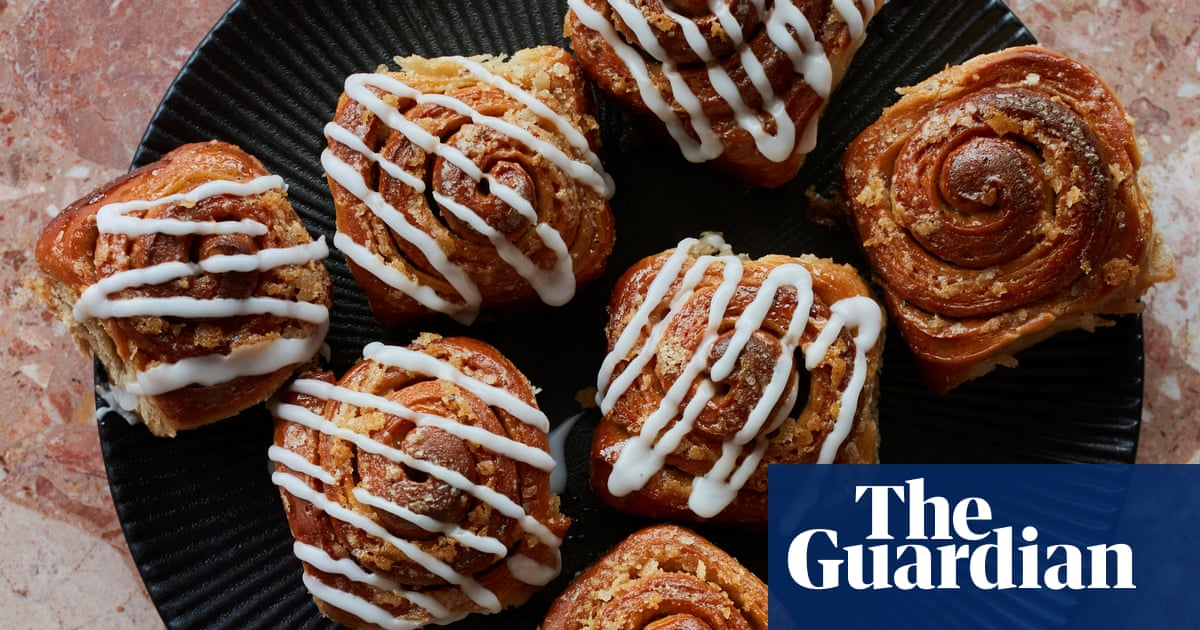As you may already know, the title ofBritain’s Best Loaf 2025was awarded to a brioche that was flavoured with lemon curd and earl grey tea. The inventor – Miyo Aoetsu, who runs a baking business from her home in Derbyshire – says the loaf was inspired by a recent Japanese trend for foods that combine the flavours of lemon and earl grey. But outside Japan, how many recipes can there be that use earl grey as an ingredient? Here are 17, just for starters.
The first, and most basic,is for earl grey itself. The connection between the tea and the 2nd Earl Grey, in whose honour it is sometimes said to have been concocted, is sketchy and possibly nonexistent. There is no official formula or authoritative version; it’s just a name given to black tea flavoured with bergamot, a type of bitter orange grown extensively in Calabria. Making your own is as simple as leaving some dried bergamot peel in a jar of black tea for a bit. The result will probably be a bit more subtle than store-bought – which usually contains oil of bergamot – but you may even prefer it.
The association between earl grey and afternoon tea is strong, and a number of recipes feature it in teatime treats. If the idea of a tea loaf flavoured with actual tea doesn’t sound like overkill to you, here’sa tasty version from Ruby Tandohin which the dried fruit is soaked in earl grey for an additional depth of flavour.
Traditional Welsh bara brith also normally contains a strong cup of tea. Anna Jones’s personal preference is for earl grey;she recommends two teabags and a long steep.Benjamina Ebuehi’s earl grey cardamom bunsstart with four teabags steeped in milk. They also use a yeast dough, so the buns need time to rise. The syrup to brush the tops of the buns requires another teabag.
Also for teatime, here’s a simplefig and earl grey jam from Lillie O’Brien. It required only tea leaves, ripe figs, sugar and lemon, heated to setting point, in this case 105C.
Earl grey’s singular bergamot scent – originally deployed, ironically, to mask inferior teas – can instantly turn an otherwise foreign pudding into something recognisably British. In this spirit,Ebuehi offers an earl grey and lemon panna cotta, whileEarl grey “tea-ramisu”is a version of the classic desert for people who don’t like coffee. AndMike Robinson’s earl grey burnt creamis an English translation of creme brulee, infusing the milk and cream with loose leaf tea tied up in muslin.
Atoast, tea and marmalade bread and butter puddingsounds like the sort of dessert you could eat for breakfast, and the use of two earl grey teabags only underscores its associations with the most important meal of the day. As a compromise, you could serve it at brunch.
Nikki Duffy pairs earl grey with apricots and mascarpone, for a pudding that mostly makes itself in your fridge, although you could have a long wait: dried apricots are soaked in the tea for anything from six hours to overnight, before the liquid is drained off and reduced on the hob. The result is poured back over the apricots, which then go back in the fridge for up to two days before serving.
For a dessert requiring rather less notice,Felicity Cloake poaches pears in earl grey tea(about 750ml) spiked with sugar and lemon zest. If you like the combination, you could also trypear and earl grey strudel with earl grey sorbet.
Sign up toFeast
Recipes from all our star cooks, seasonal eating ideas and restaurant reviews. Get our best food writing every week
after newsletter promotion
But while Earl grey may work as a sorbet, can you put it in ice-cream? Of course you can! Proving there’s a recipe out there for every idle hankering, here’s one forearl grey ice-cream from Cornwall restaurateur Nathan Outlaw.
Perhaps because of the bitter tannin contrast it provides, earl grey generally finds its way into puddings and other sweet dishes. But not exclusively. Here, for example, is apear and walnut salad with earl grey dressing. If you’re the experimental sort, you could attempt atea-brined turkey with tea-and-lemon gravywhich requires no fewer than 18 earl grey teabags. The recipe calls for the turkey to be roasted on a closed barbecue grill, although once you’ve brined it you could cook it any way you fancy.
To finish, a pair of earl grey cocktails. The main issue with putting tea in a cocktail is that it will simply water down the drink. Here are two different solutions to that problem:Andy Milz’s Mar-tea-niuses an earl grey syrup made from tea leaves, blackcurrant jam, vanilla sugar and apple juice, while theCome as You Are cocktailstarts with earl grey gin – a bottle of gin that’s had a teabag in it for six hours. Worth the wait, undoubtedly.
